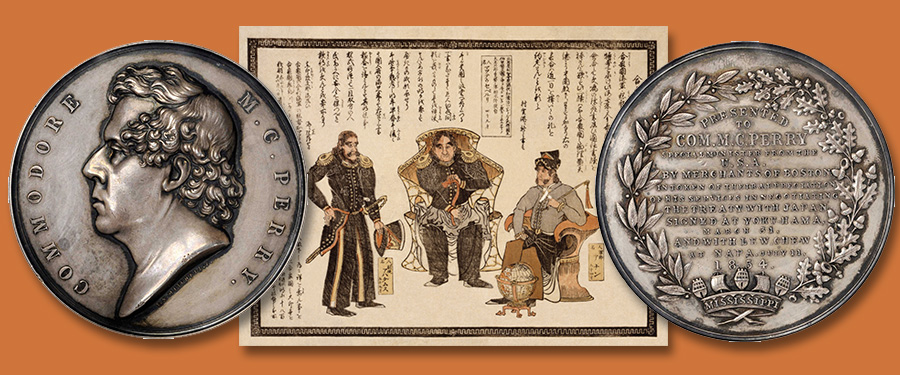
The rapid industrialization of the western world in the 19th century led to an ongoing need to open new markets, with the Far East providing a prime opportunity for both selling and buying. To this end, the United States under President Millard Fillmore sent Commodore Matthew Perry of the U.S. Navy to Japan in 1853. In July of that year, he arrived in Tokyo harbor with the intent of engaging in "battleship diplomacy," a type of negotiation which actually involved no real negotiating but instead entailed an ultimatum through threats of hostile aggression.
Japan at the time was ruled by the Tokugawa shogun (great general), as the Tokugawa family had seized power by defeating other feudal families around the empire two centuries prior. Though still technically governed by the emperor, Japan was under the de facto control of the shogun. This decentralized power structure relied heavily upon a lack of outside influence, meaning that the arrival of western powers could spell the end for the shogunate. Given Japan’s lack of maritime might, one of the only lines of defense was a stealth operation involving ninjas—one of their last military missions—whereby the ninja Sawamura Yasusuke secretly boarded Perry’s ship with the intention of gathering intelligence. Though documents were indeed gathered, the language barrier prevented any strategic value. What’s more, what was gathered presented little more than the crew’s exploits during their voyage. With no other means to rebuff their western visitors, the shogun finally acquiesced, seeing that change was inevitable and signing a trade treaty with the United States in 1854. This "opening up" of Japan would eventually cause the dissolution of the shogunate and the emergence of the Meiji imperial period little over a decade later.
In honor of Commodore Perry’s successful mission, the United States struck a commemorative medal conveying the accomplishments. While one was struck in gold and presented to Perry himself, another 20 were issued in silver—several of which were awarded to some of Perry’s higher ranking officers. One of these incredibly rare and difficult silver strikings is featured in our October Hong Kong auction (lot 40370), and represents a great link to a very historic period in the relations of the two countries as well as a close to the feudal period of Japan.
To view our upcoming auction schedule and future offerings, please visit StacksBowers.com where you may register and participate in this and other forthcoming sales.
We are always seeking coins, medals, and paper money for future auctions, and are currently accepting submissions for our official auction of the 2021 N.Y.I.N.C. in January and our next CCO (Collectors Choice Online) auction in February 2021. If you would like to learn more about consigning, whether a singular item or an entire collection, please contact one of our consignment directors today and we will assist you in achieving the best possible return on your material.





